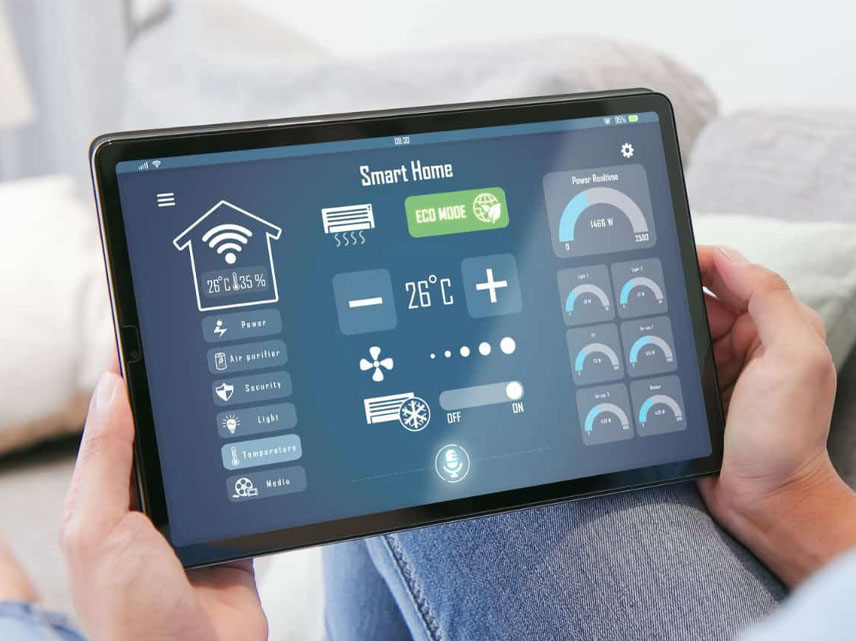How Smart Home Devices Are Changing the Way We Live
Technology has always shaped the way we live, but few innovations have impacted daily life as significantly—and as personally—as smart home devices.

Technology has always shaped the way we live, but few innovations have impacted daily life as significantly—and as personally—as smart home devices. From voice-controlled assistants and app-enabled lights to energy-saving thermostats and advanced security systems, smart home technology is revolutionizing the way we interact with our living spaces.
As we move further into 2025, homes are becoming more connected, intelligent, and responsive. This isn’t just about convenience anymore; it’s about lifestyle transformation. Let’s explore how smart home devices are reshaping modern living, and what benefits they bring to homeowners, renters, and families alike.
The Rise of the Smart Home Ecosystem
Smart home technology has come a long way from its humble beginnings. What started as a few Wi-Fi-connected gadgets has evolved into a fully integrated ecosystem where devices work together, learn your habits, and adapt to your preferences.
Today, the most common smart home devices include:
- Smart lights that dim, change color, or turn on/off based on schedules or commands
- Smart thermostats that adjust temperature based on occupancy and weather patterns
- Voice assistants like Amazon Alexa, Google Assistant, and Apple’s Siri
- Smart plugs and outlets that give you control over everyday appliances
- Video doorbells and security cameras that provide real-time monitoring and alerts
- Connected appliances like refrigerators, ovens, and washing machines that offer automation and remote control
These devices communicate via platforms like Apple HomeKit, Google Home, Samsung SmartThings, and Amazon Alexa, creating a seamless and user-friendly experience.
Convenience Like Never Before
One of the most celebrated benefits of smart home devices is convenience. With just a voice command or a tap on your smartphone, you can:
- Turn off lights in another room
- Preheat the oven while you're still at work
- Adjust the thermostat without leaving the couch
- Lock or unlock your doors remotely
- Set morning routines that open blinds, play music, and start the coffee machine
This level of control saves time and simplifies multitasking, making everyday life more manageable, especially for busy families, elderly users, or those with mobility challenges.
Energy Efficiency and Cost Savings
Smart devices aren’t just about comfort—they’re also smart about energy. Devices like smart thermostats and smart lighting systems are designed to optimize usage and reduce waste.
For example:
- A smart thermostat like the Google Nest or ecobee can learn your daily habits and adjust heating/cooling accordingly. It can even detect when you're away and automatically switch to eco mode.
- Smart lighting allows you to schedule or automate lights so they’re only on when needed, and LED bulbs use significantly less energy.
- Smart plugs let you turn off “vampire” devices—those that consume energy even when not in use—saving electricity and money.
Homeowners who integrate smart tech can often see lower utility bills, making it an investment that pays for itself over time.
Enhanced Safety and Security
Security is one of the strongest motivators for smart home adoption. Smart home security devices include:
- Video doorbells that show who’s at your door and allow for two-way communication
- Motion-sensor cameras that alert you to unusual activity
- Smart locks that let you control access from your phone and monitor usage history
- Window and door sensors that send alerts when triggered
These devices provide real-time monitoring and peace of mind whether you’re home or halfway around the world. Integration with emergency services or neighbors’ alerts even adds an extra layer of protection.
Health and Wellness Benefits
Smart home tech now extends into wellness too. Devices like:
- Air quality monitors that detect pollutants or allergens
- Smart beds that track sleep quality and adjust firmness or position
- Smart lighting systems that mimic natural sunlight to improve mood and regulate circadian rhythms
- Hydration reminders or connected fitness equipment that sync with health apps
These tools empower individuals to monitor and manage their health in subtle but powerful ways. For example, if poor air quality is detected, your air purifier can activate automatically.
Personalized Living Spaces
One of the most exciting aspects of smart homes is their ability to adapt and personalize. Your home can recognize your voice, anticipate your needs, and adjust settings based on time of day, mood, or activity.
Imagine coming home and having the lights adjust to a soft glow, your favorite playlist start automatically, and the thermostat set to your preferred temperature—all triggered as you walk through the door.
This isn’t science fiction—it’s possible today with well-integrated devices and routines. The ability to personalize environments enhances comfort, productivity, and emotional well-being.
Emerging Trends in Smart Home Technology (2025 and Beyond)
As we look ahead, several trends are pushing smart home innovation even further:
1. AI and Predictive Automation
Machine learning allows devices to understand patterns and preferences. For example, your home might start preheating your oven at 6:30 PM if it notices that’s when you typically cook dinner.
2. Matter Protocol and Universal Compatibility
Matter, a new universal smart home standard supported by Apple, Google, Amazon, and others, is making devices more compatible across platforms, reducing headaches with setup and control.
3. Sustainability-Focused Devices
More smart gadgets now focus on sustainability—think water-saving irrigation systems, smart recycling bins, and solar-compatible controllers.
4. Voice Assistant Evolution
Voice assistants are getting more conversational and capable. In 2025, many can handle multi-step requests, distinguish between users, and act as personalized digital butlers.
5. Smart Home Robots
From robotic vacuum cleaners to mobile assistants like Amazon Astro, robots are taking on more household responsibilities—cleaning, monitoring, and even companionship.
Challenges and Considerations
Despite their benefits, smart home devices do come with challenges:
- Privacy concerns: Some users are wary of data collection or security breaches.
- Initial cost: While prices are dropping, a fully smart home setup can still be costly.
- Tech compatibility: Devices from different brands don’t always work well together.
- Learning curve: Some users find it overwhelming to manage multiple apps or settings.
That’s why research, reviews, and platforms like Matter are crucial for making smarter decisions.
Smart home devices are more than just cool tech—they’re redefining how we interact with our homes and enhancing quality of life across the board. Whether it’s saving energy, boosting security, or making everyday routines smoother, connected technology is bringing a new level of intelligence into our lives.As innovation continues, our homes will become even more adaptive, predictive, and human-centered. And with the increasing affordability and simplicity of setup, it’s easier than ever to start turning your home into a smart one.Now is the perfect time to embrace the future of living.
Recent Blogs
-

Best Neck and Shoulder Massagers for At-Home Pain Relief
-

Best Collagen Supplements for Women Over 40: How to Elevate Your Choice
-

Best Natural Aphrodisiac Supplements for Boosting Libido and Performance
-

Best Flavored Sunflower Seeds to Satisfy Every Craving
-

Best Brain Health Supplements for Focus, Memory, and Energy